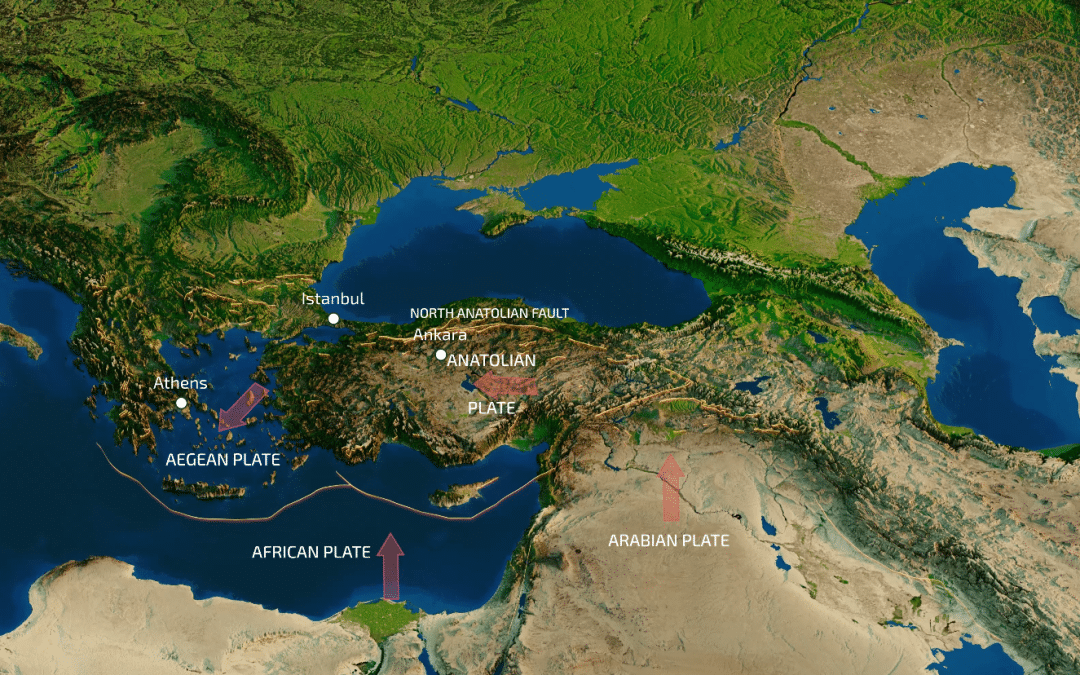Seismicity in Turkey is shaped by its dynamic and complex tectonic setting, located at the convergence of the Eurasian Plate, the Arabian Plate, and the African Plate. This unique position makes Turkey one of the most seismically active regions in the world. Here are the main factors defining seismicity in Turkey:
North Anatolian Fault (NAF): This major strike-slip fault extends across northern Turkey from the Aegean Sea to the eastern part of the country. It is similar to the San Andreas Fault in California and is responsible for much of Turkey’s seismic activity, including several devastating earthquakes in recent history.
East Anatolian Fault (EAF): This is another significant strike-slip fault located in eastern Turkey. It forms the boundary between the Anatolian Plate and the northward-moving Arabian Plate and is also a source of considerable seismic activity.
Hellenic Arc and Subduction Zone: To the southwest, the African Plate subducts beneath the Aegean Sea Plate along the Hellenic Trench. This area is particularly prone to large earthquakes and volcanic activity, influencing the seismicity of western Turkey.
Anatolian Plate Movement: The Anatolian Plate, largely covering Turkey, is being pushed westward and squeezed between the Eurasian Plate to the north and the Arabian and African plates to the south and east. This tectonic escape causes significant crustal deformation within Turkey itself.
Complex Interactions at Plate Boundaries: The interactions at these plate boundaries are not straightforward and include translational, rotational, and compressional movements, leading to a high frequency of earthquakes throughout the region.
Crustal and Deep Earthquakes: Turkey experiences both shallow crustal earthquakes, which are more frequent and damaging, and deeper earthquakes associated with the subduction processes, particularly in the eastern Mediterranean region.
Historical Seismicity: Turkey has a long history of significant earthquakes that have shaped its landscape, culture, and architecture. Historical seismicity provides critical data for current seismic hazard assessments and future predictions.
Volcanic Activity: While not as prominent as the tectonic earthquakes, volcanic activity related to the complex subduction processes also contributes to the seismic landscape in parts of Turkey.
These geological features and processes combine to create a highly active seismic environment in Turkey, necessitating continuous monitoring and preparedness to mitigate the impacts of earthquakes on its populous and historically rich regions.

